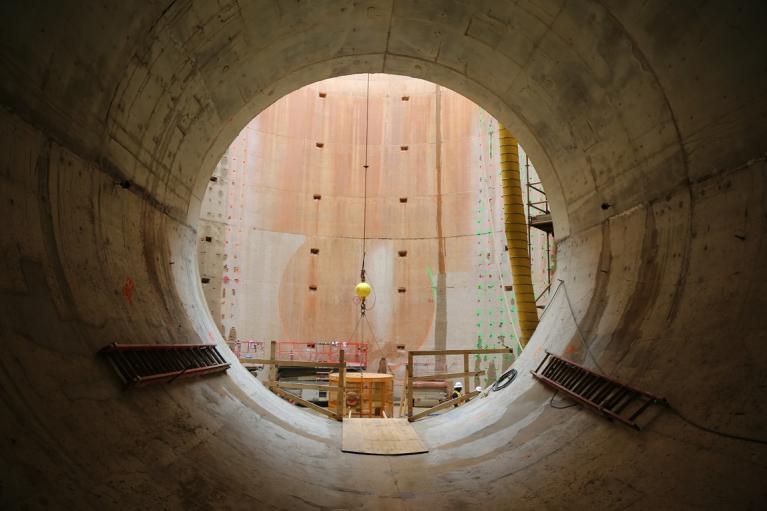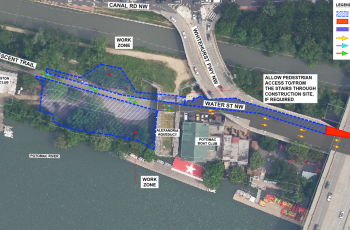Overnight Storm First Major Test of DC Water’s New Anacostia River Tunnel

DC Water’s newly opened Anacostia River Tunnel System was pressed into service overnight as heavy rains battered the District of Columbia. About two inches of rain fell over a three hour period, far more than the city’s combined sewer system can handle. During the storm, the new tunnel prevented approximately 170 million gallons of combined sewage and stormwater from being discharged to the Anacostia River.
DC Water placed into operation the first section of the Anacostia River Tunnel System, from RFK Stadium to the Blue Plains Advanced Wastewater Treatment Plant, in late March. This portion of the system comprises about seven miles of 23’ inside diameter tunnel that can store more than 100 million gallons, while continuously processing another 225 million gallons per day at the new Wet Weather Treatment Facility at Blue Plains.
Henderson Brown, DC Water’s Interim CEO and General Manager, said, “In its first real test, the new tunnel system worked as designed, storing – then treating—millions of gallons of combined sewage that otherwise would have overflowed to the river. That is great news for the Anacostia, and it will only get better when the rest of the tunnel system is brought online.”
During the storm the new tunnel filled to capacity. Based upon preliminary data analysis, the flow exceeded the tunnel capacity by between 10 and 20 million gallons, which overflowed to the Anacostia River. The next portion of the Anacostia River Tunnel system, the Northeast Boundary Tunnel now under construction, will add approximately 90 million gallons of storage when it is placed into service in 2023.
As in many older cities, about one-third of the District has a combined sewer system. A combined sewer overflow (or CSO) occurs during heavy rain when the mixture of sewage and stormwater cannot fit in the sewer pipes and overflows to the nearest water body. CSOs contain bacteria and trash that can be harmful to the environment, but the system was designed as a preferable alternative to the combined sewage backing up in homes and businesses and on the streets. Since the early 1900s, only sewer systems with separate pipes for sewage and stormwater have been installed in the District. CSO tunnels similar to DC Water’s already exist in Chicago, Indianapolis, Atlanta and other cities.
Once the Anacostia Tunnel System is completed, overflows may still occur in rare, intense rainstorms, but the tunnels will capture 98 percent of the CSOs in an average year.
For more information on the Clean Rivers Project, please visit www.dcwater.com/cleanrivers.







